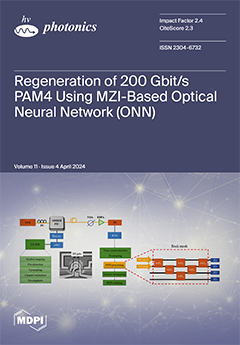Due to the fundamental differences between the quantum world and the classical world, some phenomena, such as entanglement and wave–particle duality, only exist in the quantum realm. These peculiar phenomena cannot be demonstrated by classical means: Quantum networks, quantum cryptography, and quantum precision
[...] Read more.
Due to the fundamental differences between the quantum world and the classical world, some phenomena, such as entanglement and wave–particle duality, only exist in the quantum realm. These peculiar phenomena cannot be demonstrated by classical means: Quantum networks, quantum cryptography, and quantum precision measurements all require quantum sources. Photons are particularly well-suited as quantum sources owing to their minimal interaction with the environment, high flight speed, and ease of interaction with current typical quantum systems. Single-photon sources include pulsed excitation of quantum dots, spontaneous parametric down-conversion, and photon blockade. Herein, we propose that the anti-Jaynes–Cummings model can induce a pronounced photon antibunching effect when subjected to intense cavity dissipation. Similar to the photon blockade caused by strong photon–photon interaction, this antibunching effect is referred to as ’dissipation-induced blockade’. Our findings indicate that the minimum decay rate of a qubit, coupled with a high decay rate for photons, is conducive to achieving strong antibunching within the system. Notably,
, a characteristic of photon antibunching, is only valid under the optimal condition
. Conversely,
is satisfied across all parameters, indicating that
is not a prerequisite for antibunching in the anti-Jaynes–Cummings model. Moreover, under the optimal conditions of the antibunching effect, the average photon number attains its peak value. Consequently, the current anti-Jaynes–Cummings model is promising for developing single-photon sources characterized by excellent purity and average photon number.
Full article





